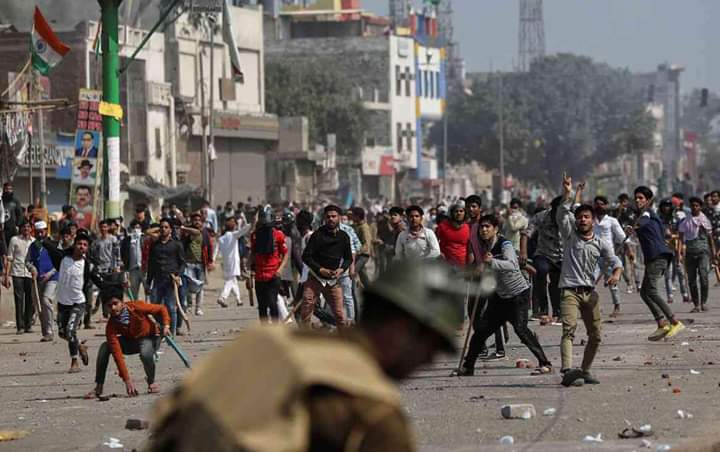Curfew in 4 Delhi areas, death toll rises to 13

Curfew was imposed in four areas of northeast Delhi as violence continued on Tuesday and the death toll went up to 13 in violence linked to the Citizenship Amendment Act (CAA).
Over 100 people have been injured. Several have suffered gunshot wounds.
Many residents alleged that the police did not act when they were attacked — a charge that had been levelled when a spate of lynchings had reared its head after 2014 and when riots had engulfed Gujarat in 2002.
Late at night, reports came in that shanties in Mustafabad had been set ablaze and ambulances were being blocked.
The curfew has been imposed in the Maujpur, Jaffrabad, Chand Bagh and Karawal Nagar areas in northeast Delhi.
The Delhi government said at night that all schools in the northeast zone of the capital will be closed on Wednesday.
Groups armed with petrol bombs, sticks and rods roamed Maujpur, beat up people and vandalised homes and shops on Tuesday. Reports of fresh incidents of stone-pelting and arson came in from the Maujpur-Babarpur and Shivpuri areas.
The police were absent at several places, residents complained. Later, a senior officer said about 3,500 police and paramilitary personnel had been deployed.
Groups opposed to and supporting the citizenship act blamed each other for the fresh violence, accusing each other of hurling stones on Tuesday morning.
Union home minister Amit Shah on Tuesday afternoon held a meeting to discuss the situation. Senior officials, chief minister Arvind Kejriwal, commissioner of police Amulya Patnaik and Congress leader Subhash Chopra were among the participants.
The home minister appreciated the participation of all parties and urged them to exercise restraint and rise above party lines to tackle the situation, a ministry official said.
But later in the day, BJP leader B.L. Santosh called for a harsh response, tweeting: “Jaffrabad Metro protest area totally cleared. Time to enforce law in its entire spirit. Rioters need to be taught a lesson or two of Indian laws.”
The police have persuaded the protesters at Jaffrabad, mostly women, to vacate the site after curfew was announced. The start of the violence is blamed on a procession led by a BJP leader to oppose the Jaffrabad vigil against the CAA.
Eyewitnesses in Jaffrabad said several young men armed with iron rods and stones chanted “Jai Shri Ram”. Shops, cars and e-rickshaws belonging to the minority community were set ablaze in Maujpur and Ghonda while the police looked on, some residents said. The crowd assaulted youths who were taking photos of the arson.
Pieces of stones, bricks and glass shards lay strewn on the road and plumes of smoke billowed from houses, shops and vehicles that were torched in Maujpur. Huge clouds of smoke billowed from a tyre market that had been set ablaze.
“Targeted attacks on Muslim households were carried out and shops were set ablaze. People are living in fear and many of them are shifting to safer locations and Muslim ghettos in other parts of Delhi,” an eyewitness said.
The violent crowd, he said, shouted incendiary slogans and set on fire several fruit carts, rickshaws and anything that stood in their way in Maujpur and other adjoining areas.
The violence overshadowed the concluding day of President Donald Trump’s visit, and international media recalled the Gujarat riots of 2002.
“This kind of communal violence has left a lasting mark on Mr. (Narendra) Modi’s legacy. In 2002, when he was the chief minister of Gujarat State, sectarian riots left more than 1,000 people dead — almost 800 of them Muslims who were killed by Hindu mobs,” The New York Times reminded its readers.
“He and his state government were accused of quietly ordering the police to stand by as the violence raged,” the newspaper said, adding that Modi had denied the charges and a panel for the Supreme Court had found no evidence to charge him.(The Telegraph)






